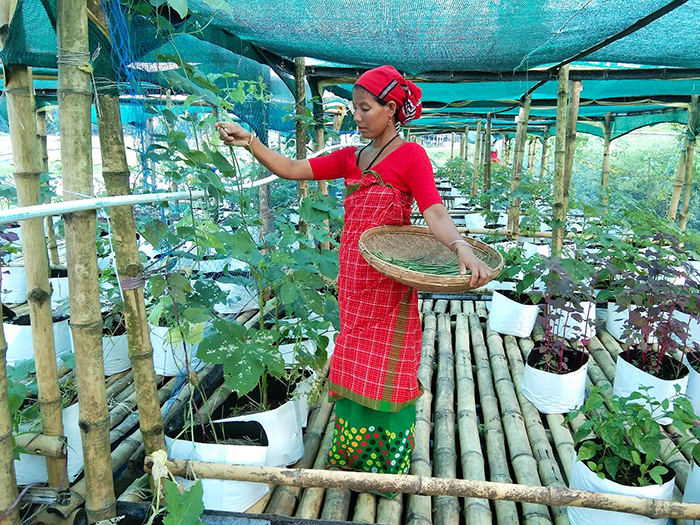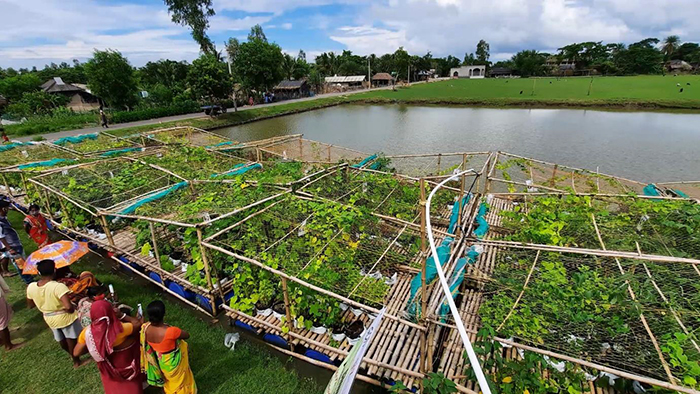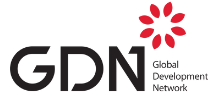
Dr. Dipayan Dey is the Program Director of the South Asian Forum for Environment (SAFE), a civil society organization working towards sustainable environmental development and poverty alleviation, based in India. In 2016, SAFE won a Japanese Award for Most Innovative Development Project (MIDP) of 30,000 USD to implement their project on hydroponic aquafarming aimed at improving climate resilience of indigenous smallholders on Majuli Island, India. After successfully finalizing this project, SAFE won the follow up Japanese Social Development Fund (JSDF) Award of 200,000 USD in 2017 to upscale and replicate their work on adaptive float farms in a flood prone area in Bangladesh.
Developing the floating farm concept
Dr. Dipayan Dey is an environmental biotechnologist by training, with over 25 years of experience in community-based sustainable climate initiatives in South Asia. Through SAFE’s work in environmental development, it got connected to the river island of Majuli in India, mainly inhabited by indigenous people and a biodiversity hotspot that extends across parts of Bangladesh and India. This region faces severe flooding and inundation of arable lands in the monsoon, pushing the local community into a highly vulnerable climate situation, wherein their livelihoods and food security are under threat.
At the time, there were no organizations dedicated to helping the people of Majuli Island. Therefore, SAFE took the initiative to innovate and develop solutions to mitigate the climate risks for smallholders in the community. They began to construct floating raft structures made of hydro-foam, agro-waste and vermicompost, that would be prepared as farming beds for horticultural cash crops. Each raft was fit to serve as a livelihood unit for one small family and to sustain three cropping cycles during inundation.
The idea behind the intervention was to guarantee the food security of the community through these floating farms, in case of a crisis. SAFE tested their approach and found that the floating rafts would provide substantial profit returns for the farmers. They developed a full project around floating rafts, capacity building in aqua-farming technology, disaster preparedness, post harvesting processes and market linkages.

Winning the grant and its impact
“Usually, innovation is not looked at with a very good eye because of the fear of failure that always comes with innovation, but GDN is that organization, which is ready to support innovations,” shares Dr. Dey.
As their project was focused on a promising, innovative, but not yet proven mechanism, SAFE faced difficulties finding funding for the concept. However, when they applied for a Japanese Award for Most Innovative Development Project (MIDP) in 2016, they won a 30,000 USD grant. The MIDP grant allowed Dr. Dey and his team to implement and pilot their concept fully among 5,000 smallholders on Majuli Island.
After the successful pilot, SAFE won a followup Japanese Social Development Fund (JSDF) grant to scale up the project in other districts of India and Bangladesh. Based on the pilot project, there were three key learnings that SAFE took and incorporated into the scale-up to 15,000 indigenous smallholder farmers.
First, having the entire innovation designed in a participatory way is key for community adoption. In the scale up, SAFE was better able to integrate the community’s perception in their design concept, which made the approach more sustainable and acceptable. Second, they learned that the climate risk assessment must be accurate, but a plan B should always be in place as there is a huge risk for project beneficiaries. SAFE decided to prepare for the risk and include other means of livelihoods into the program such as livestock farming, fishing, and other crops, which meant that if the crop did not give substantial yield, the fisheries could substantiate that loss. Third, it is crucial to mainstream their activities into government schemes that are running in that specific area. The three learnings were incorporated in the scale up phase and led to good results.
After winning the MIDP award, the project received widespread national and international media coverage. Internationally, the project was mentioned in a UN South-South Galaxy publication. In India, the Confederation of Indian Industries (CII) awarded the project and enabled SAFE to showcase it among private sector parties. This directly led to partnerships and funding for expansion of the project. For example, following a presentation made for CII, SAFE received additional funding from PriceWaterhouseCoopers’sCSR program. This funding allowed SAFE to add a component on crab fattening to the project. Additionally, during the scale up phase, SAFE secured funding from GIZ, using which they were able to form linkages with banks and focus on financial inclusion. Moreover, Springer will be publishing a peer reviewed paper on the intervention and its impacts.
SAFE also turned its attention to collaborations with relevant government bodies to institutionalise and upscale the initiative. It had been a challenge, in general to win government support since the idea of the AFLOAT methodology was still new and innovative. Through lobbying efforts to push the AFLOAT methodology to become a mainstream activity, the organization managed to securan agreement with the government to apply the methodology in at least six or seven districts.
Dr. Dey recalls, “During the pandemic, there were two super cyclones in this area. But even in the middle of all that, people had food to eat and a livelihood to sustain themselves. That is, I think, the most important impact that we have seen of this project.”
The cyclones only brought limited damage to the floating forms, demonstrating the resilience of the technology in extreme weather events. From a project perspective, this damage could be managed financially by the return on investments the project had already generated. The manner in which the project was able to cope with the natural calamity, led to increased faith in the technology among people.
The targeted smallholders are reporting good production and income levels. Within 10 months, the farmers have been breaking even on their investments in floats, while the floats last for three years. SAFE observed that aqua farming, especially crab fat meat for export is high yielding and has high value for the beneficiaries. Now that the technology has been proven and shared, Dr. Dey has observed that smallholders on Majuli Island are picking up the technology on their own. For example,indigenous communities have started to cultivate indigenous medicinal plants on their floats to make sure that these medicines are at hand. In another area, close to the metropolitan city of Kolkata, the same technology is being adopted and scaled up in a commercial way. “Even now, when we go to Majuli, we find that they are making and adapting the rack themselves because it is a very simple technology.”
After the technology was adopted, SAFE started to give out credit linkages through interest free loans for the construction of the floating rafts. In this way, a revolving fund was set up to expand the number of beneficiaries in the long term. Overall, Dr. Dipayan Dey is grateful for the trust and support from GDN throughout both project stages. This has allowed SAFE to validate their whole economic paradigm, engineering paradigm and social frame. Now, the approach is proven and ready to be upscaled globally.
Plans and ambitions for SAFE
Now that the GDN grant has ended, the project will continue to exist under the umbrella of the United Nations Development Programme with adaptation as their focus. Taking into account the impact on project beneficiaries and project sustainability, the difference it has made to livelihood resilience is evident.
For the future, Dr. Dey and his team have large ambitions to scale up their project further. While the technology was developed for flood prone areas, the team is considering applying the concept to other areas as well, for example, a rooftop or a desert or mountainous area. As the concept makes use of a regenerative method, wherein nutrients and waste are recycled into the growth medium, the intervention should be able to self-sustain itself and be fit for use anywhere to grow food. The team is currently looking into how the design can be customized to match other agroecological zones. To implement these ideas SAFE will develop additional capacities on how to link the project with carbon credits and to refine the economic model further.
Read other impact stories from the Global Development Awards Competition.
About the Global Development Awards Competition
The Global Development Awards Competition (GDAC) is an award scheme that identifies talent, supports the career advancement of researchers in developing countries, and funds innovative social development projects, implemented by NGOs, to benefit marginalized groups in the developing world. The award categories include the Japanese Award for Outstanding Research on Development (ORD), the Japanese Award for Most Innovative Development Projects (MIDP), and the Japan Social Development Fund Award (JSDF). Learn more.
